I love this skirt pattern because it's simple to make, it is fairly forgiving to mistakes (and most body shapes!), and the finished product looks more complex than it is! This is really more of a tutorial than a pattern. I don’t have all of your measurements, I don’t have the patience to figure out standard sizing, and it's more fun if you can customize it to your taste. So I’m going to give the basics and you can make your skirts custom to you!

Supplies needed:
- Scissors capable of cutting two layers of fabric
- A soft tape measure (or string/yarn + a rigid tape measure/yardstick/ruler/etc)
- Straight pins
- 1 large safety pin (2" or larger is ideal, but you can work with what you have)
- A mode of sewing (I’m using a sewing machine but if you don’t have a machine, this can be sewn by hand with a needle it’ll just take longer)
- A length of string or yarn
Materials:
- 2-3 yards of fabric depending on the size the skirt you want (If you want to make this for a child it’ll be less! You might want to do your measurements to calculate how much fabric you will need before you purchase your supplies since I’m not giving precise measurements)
- 1” elastic for waistband
- Thread
Measurements
- Before you start, you should figure out what size of seam allowance you feel comfortable with, usually between 1/4" and 1/2". Whatever you use, you should factor in your seam allowance to your measurements and remain consistent. There are often markers on sewing machines to help you keep this consistent.
-
Measure your waist:
- First, use your soft tape measure or string to measure your waist
- Since this is an elastic waistband skirt, you want the fabric of your skirt to be larger than the final desired measurement so that the elastic has space to stretch. I usually add ~3" or the width of my hand to my waist measurement. Before you cut your fabric, make sure you the waist measurement you've chosen will have enough space for the waistband to clear your hips.
- Add in your seam allowance for each side.
- Since you will be cutting out the waist as a circle, this waist measurement is the the circumference of the circle. If you want to be precise about the waist of your skirt, you can calculate the radius of the circle (radius = circumference/2π). If you do not want to do the calculations, you can approximate by cutting a string to the measurement you made above, laying it out as a circle, and measuring the approximate diameter and dividing by 2 for an approximate radius.
- Example: if your actual waist measurement is 30", and you're doing 1/4" seams, you want your circumference to be 33.5", making your radius 5.3" and diameter 10.6"
-
Measure length:
- Since this skirt is basically two squares superimposed to make an asymetrical hem, you are going to be measuring from the waist to the shortest length you want the fabric to go. I usually just use the width of the fabric (54" or 48"), cut it into squares, and center the waist as a circle in the middle. However, you should verify that the length that comes to works for you and cut your squares of fabric to your preference.
- Figure out where on your waist you want the skirt to sit (high-rise, waist, hips) and how long you want it to go (mini, knee-length, full length). Then use your tape measure or string to measure the length from where you want your waist to be to where you want the skirt to fall on your leg. This step is much easier if you've got an extra person to give you a hand
- Add at least double your seam allowance to do a double fold hem so it doesn't frey. If you want a bit more leeway, leave a larger amount of space on the length because you can always hem it up, but once it's cut there's only so much you can do to make it longer.
- Example: You have 54" wide fabric, a 30" waist measurement, and you're doing 1/4" seams. You want to cut your waist to 33.5" with a diameter of 10.6" so you will have 21.7" from the waist to the middle of each side.
Choose your fabric
- Pay attention to your fabric design. Fabric with a design that needs to be facing a specific direction will not work with this skirt because it is cut in the round and the pattern on either the front or back of your skirt will be upside down.
- Your two layers don't need to match, if you use semi-transparent fabric, the two colors will combine where they overlap.
- I'm outlining this as two layers, but you can add as many as you and your sewing machine can handle.
- Different types of fabric will lay differently. A quilting cotton will be a bit stiffer and fuller, a knit will drape a bit closer to your body.
Prepare and cut your fabric
- Cut two squares of fabric to your required measurements.
- Lay the two squares evenly on top of each other and fold in half.
- Mark out your waistline in the center of the folded side.
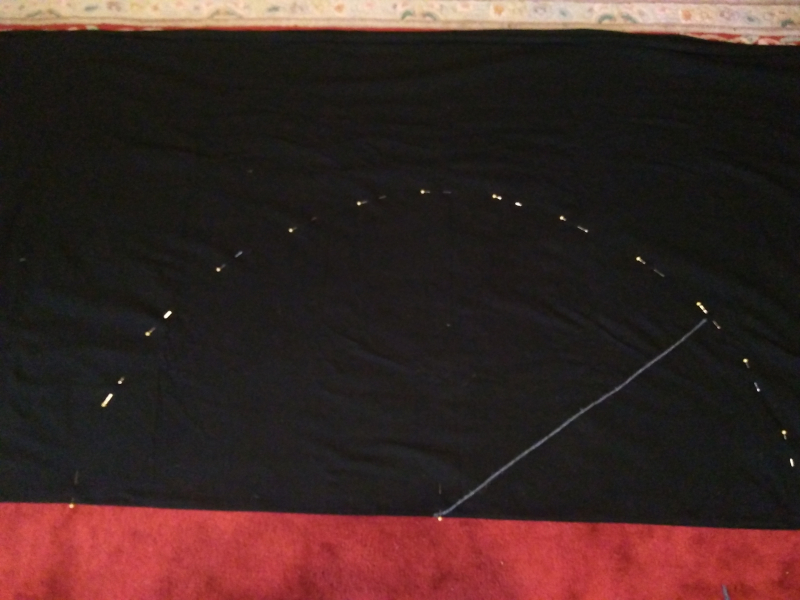
- Tie a knot at one end of your length of string. Measuring from the knot, cut the length of string to the radius of your waistband.
- Pin the knot of the string in the center of the fabric along the fold. Use this to measure out a half circle onto your fabric. (Since my fabric was black and I didn't have a white chalk marker I used pins to mark out the pattern.
- Cut out the waistline
- Position the two panels so that the points of the bottom square intersect the sides of the top square with the hole for the waistband aligning with the right sides of both facing the same direction.
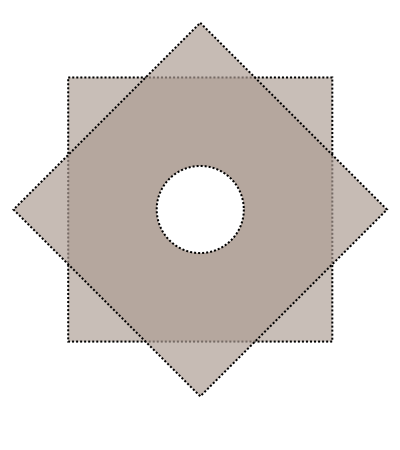
- Pin along the waistline
Make waistband
- Sew along the waistline.
-
Turn inside out
-
Fold again leaving a channel large enough to fit your elastic waistband through (if you are using 1" elastic, fold to 1 3/8" this give you enough space for a 1/4" seam allowance and an 1/8" margin of error). Run a straight stitch at the bottom of the waistband leaving a 1 1/4" gap in this seam. Since you are folding from the inner circle outward, this will require some bunching and maneuvering. It won't look pretty at this stage; however, since it's an elastic waistband, that won't be noticable in the final product.
-
Guage the size of waistband by wraping the elastic around your waist and tightening it to the level that seems comfortable to keep the skirt where you want it. Leave a 1" allowance and cut to size.
-
Use a flat pin to attach one end of elastic to your skirt panel outside of the gap in your waistband seam. Attach the safety pin to the other end of your elastic, feed it through the gap in your waistband seam. Use the safety pin to feed the waistband through the channel until it emerges again through the gap.
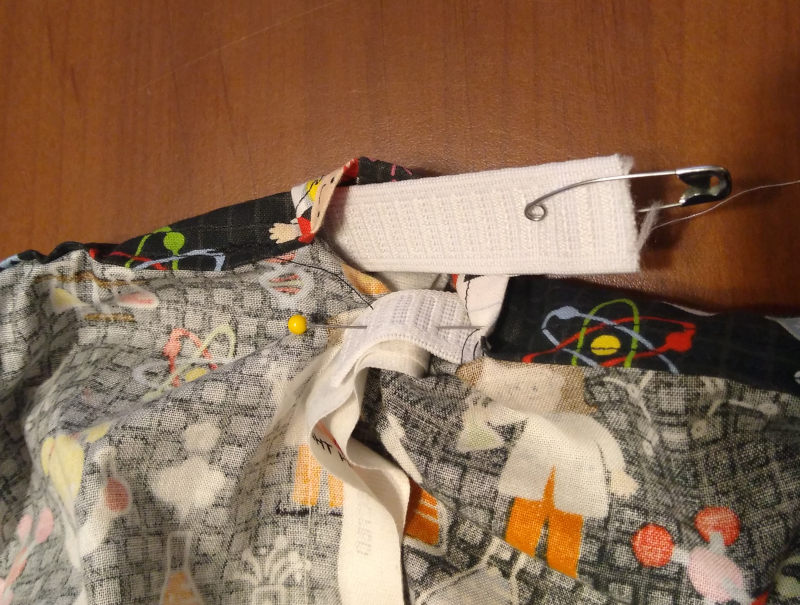
-
Make sure that your elastic is not twisted inside of the waistband.
-
Overlap your 1" allowance on your waistband and sew several parallel lines within that inch to secure the elastic (since elastic stretches, this is an easy point of failure if you only do one point of attachment).
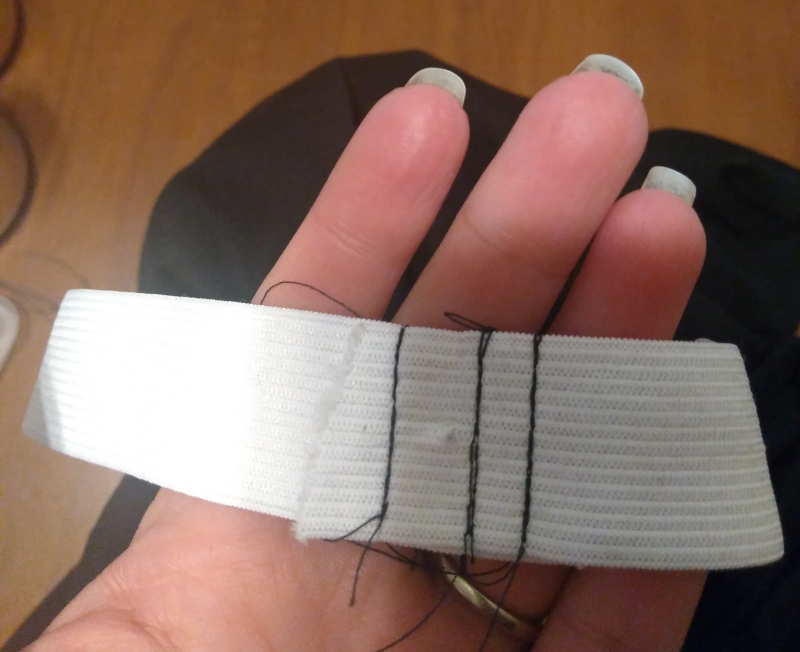
-
Feed the seam back into the channel and close the gap in your seam
-
Even out the distribution of gathers in the waistband so that it is even across the skirt. Start by stretching the waistband as far as it will extend and releasing it, then manually even out any additional areas where necessary.
Try it on!
- If you are making the skirt for yourself or someone in the vacinity, this is a good time to turn the skirt right side out and try it on to guage the fit of the waist and the length of the skirt.
Double Hem the bottom of skirt
- Fold hem once to seam allowance, run a straight stitch to secure.
- Fold hem to the the length of skirt you prefer.
Cut all of your loose threads.
Try skirt on. If anything doesn't quite look right, don't be afraid to rip your seams and redo (I probably spend more time ripping than sewing).
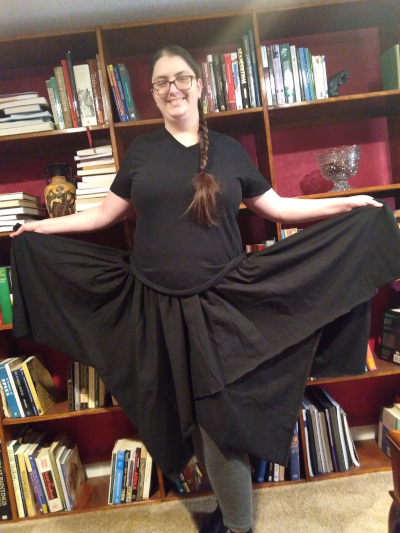
Free Soft Wear
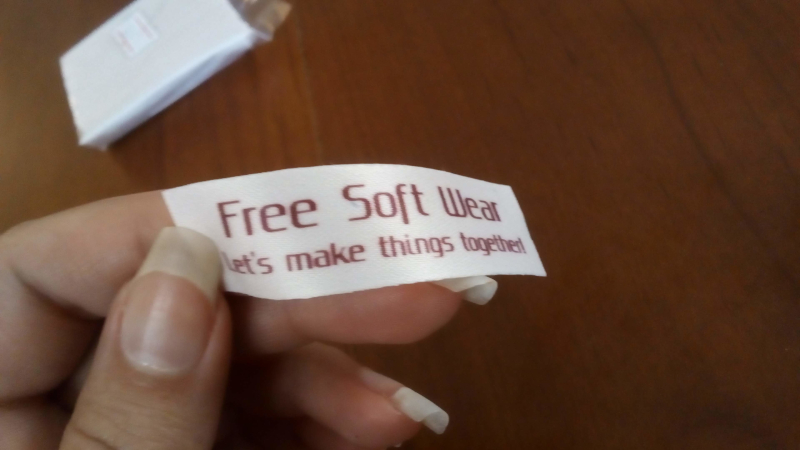
This tutorial is released under CC BY-SA 4.0! Please feel free to share and adapt the content of this post!